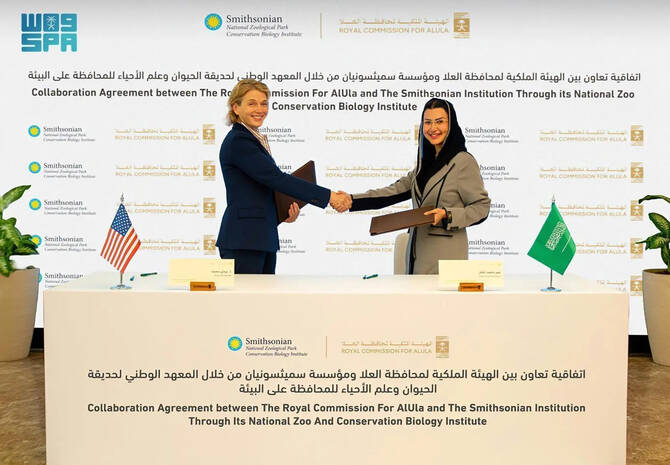
- ARAB NEWS
- 17 Aug 2025

ALULA: The Royal Commission for AlUla (RCU) and the Arabian Leopard Fund have partnered with the Smithsonian Institution to support international efforts to protect the Arabian leopard, the Saudi Press Agency reported Thursday.
Under the agreement, RCU will lend of a pair of Arabian leopards to Smithsonian’s National Zoo and Conservation Biology Institute as part of a scientific program designed to enhance conservation efforts, promote genetic diversity, and raise global awareness about this rare species.

The Arabian leopard (Panthera pardus nimr) is considered one of the world’s most endangered big cats, with approximately only 120 left in the wild, including about 20 that are confined mostly to the Kingdom’s isolated southwestern mountains of Asir and the Hijaz.
At the RCU wildlife conservation facility in AlUla, there were 27 Arabian leopards as of last year, a senior official of the commission was quoted by a special Arab News report as saying

In partnering with Smithsonian, the RCU aims to bolster its Arabian leopard breeding program and significantly “enhance the chances of survival for the critically endangered species and establishing a population outside its native habitat.”
The collaboration is also hoped to drive advanced scientific research on the endangered animal and facilitate the creation of the first exhibit of its kind for these big cats in the United States and “stimulate community support for conservation programs.”